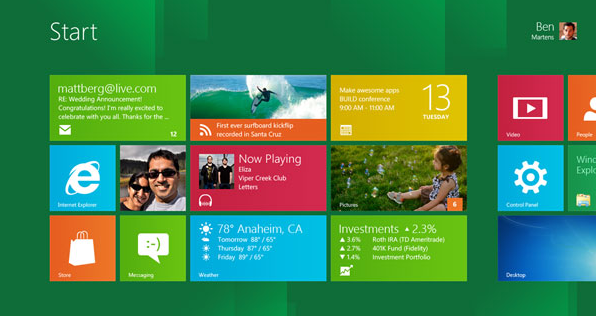Microsoft Windows 8 testers clamor for more interface customization (and may get some)

A new post on the Microsoft Building Windows 8 blog has triggered a debate among testers as to the extent Microsoft should and could allow customization of the Windows 8 interface.

The new Windows 8 interface is the most noticeable change in the coming Windows operating system. And it has been a polarizing one: Those who've seen and tried it either love it or they don't. Many of those who don't have not found the UI to be cumbersome on non-touch PCs and tablets; in the developer preview, users need to use a less-than-optimal scroll bar to navigate with a mouse.
While a number of Microsoft watchers, including me, believe Microsoft is going to make relatively few user/tester-suggested changes to Windows 8 at this point in the development process, the October 3 blog post offers some hope that feedback isn't totally falling on deaf ears.
"We are working to improve mouse scrolling in the Start screen. We'll talk soon about a new way to scroll without having to use the scroll bar. Also, the scroll wheel is not working in the Developer Preview as we intend it to and we’ll be fixing this as well," Sareen told readers in the comment section of the post. The new scrolling capability will be in the coming Beta of Windows 8, he said.
Sareen also said that there will be a way to close Metro-style apps without having to rely on the Windows 8 Task Manager -- another common request from a variety of testers. While there will be a way, Sareen emphasized that "we also want to talk about why you probably won't need to use it." And it sounds like there possibly (though not definitely) may be changes coming in terms of multitasking. "Some of you have talked about it feeling less efficient to cycle through your recent programs compared to using the taskbar (and we'll have more to say about that in future posts)," Sareen said.
The nearly 200 (as of 11 am ET on October 4) comments on Sareen's post were of mixed opinions about the new Start experience in Windows 8, with more criticizing it than complimenting it. A couple of posters noted in the comments that they're concerned that Microsoft's insistence on the new touch-centric Start Screen as the default UI is going to end up like Microsoft's decision to make the Ribbon interface the default for Office. While some users love the Ribbon UI, plenty hate it and cite it as a key reason they are unwilling to upgrade to more recent versions of Microsoft's Office products. Office users can hide the Ribbon but they can't go back to the pre-Ribbon UI days with Office 2007 or 2010.
With past releases of Windows and Office, Microsoft officials have defended the fact that Microsoft doesn't provide multiple UI choices because it complicates its developer story. Should devs (both outside and inside Microsoft) create apps that assume a classic interface or a new UI like the Metro-style one (or both)? In the case of Windows 8, however, developers writing apps that are based on the new Windows Runtime, or WinRT) have that choice made for them: WinRT apps are Metro-style apps. Period. Developers who aren't relying on WinRT seem to be able to choose whether they build Metro-style apps or more classic-style Desktop apps.
I've heard a couple of folks, including Windows Supersite's Paul Thurrott, note that Microsoft is going to allow business users to tailor what will appear on the Windows 8 Start Screen using Group Policy settings. Will this mean IT admins can configure Windows 8 so that their users never see the Metro interface and go straight to the Desktop app, which has more of a traditional Windows UI feel? I haven't been able to find any written references to this in the Build slides or Microsoft's blog posts, however. (Anyone else?) If this is, indeed, going to be an option, the Windows team could save itself a lot of angry comments if it made this coming option "official."
As I've written before, I like the new Windows 8 Metro interface, but I'm still a skeptic regarding its suitability outside the realm of touch tablets. Even after Build, I'm still not sold on Metro as the default on my PC; I'd prefer a choice.
Do you think Windows 8 users should get more UI customization? (And will they?)